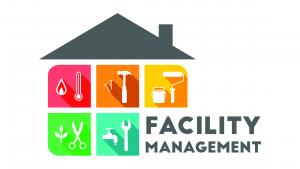The facility management market is experiencing dynamic trends .
SHERIDAN, WYOMING, UNITED STATES, January 16, 2024 /EINPresswire.com/ — IMARC Group’s latest research report, titled “Facility Management Market: Global Industry Trends, Share, Size, Growth, Opportunity and Forecast 2024-2032,” the global facility management market size reached US$ 70.6 Billion in 2023. Looking forward, IMARC Group expects the market to reach US$ 198.5 Billion by 2032, exhibiting a growth rate (CAGR) of 11.8% during 2024-2032.
Get Sample Copy of Report at – https://www.imarcgroup.com/facility-management-market/requestsample
Factors Affecting the Growth of the Facility Management Industry:
• Technological Advancements:
The integration of advanced technologies, including Internet of Things (IoT), Artificial Intelligence (AI), and building information modeling (BIM) is revolutionizing facility management, thus supporting the market trends. These technologies enable more efficient and effective management of building operations, energy usage, and maintenance activities. IoT devices, can monitor building systems in real time, predicting maintenance needs and optimizing energy consumption. AI and data analytics play a crucial role in decision-making processes, enhancing operational efficiency. This technological shift improves the functionality of facilities and opens new opportunities for cost savings and sustainability initiatives.
• Sustainability and Green Building Initiatives:
Increasing awareness and regulatory requirements related to environmental sustainability are significant drivers for the facility management market. There is a growing demand for green practices in building management, including energy-efficient systems, waste reduction, and sustainable resource utilization. Facility managers are therefore adopting eco-friendly practices and technologies, making sustainability a core aspect of facility management. This trend is not only driven by regulatory compliance but also by corporate social responsibility (CSR) initiatives and the desire to reduce operational costs.
• Outsourcing of Facility Management Services:
The trend towards outsourcing non-core business activities, including facility management, is a key driver of market growth. Companies are increasingly recognizing the benefits of outsourcing FM services, such as cost reduction, access to specialized expertise, and improved efficiency. Outsourcing allows organizations to focus on their core competencies, while facility management companies provide comprehensive services ranging from maintenance and security to cleaning and space management. This shift has led to the growth of the FM service industry, with more companies entering the market to meet the rising demand.
Top Facility Management Companies Worldwide:
• IBM
• Oracle
• Trimble
• CA Technologies
• SAP
• Archibus
• Accruent
• Maintenance Connection
• MCS Solutions
• Planon
• Ioffice
• Jadetrack
• Metricstream
• Emaint
• Facilities Management Express etc.
Global Facility Management Market Trends:
The facility management market is experiencing dynamic trends that shape its evolution and impact across industries. Firstly, there is a notable shift towards value-added services beyond traditional maintenance, with a growing emphasis on offerings like workplace optimization, sustainability consulting, and data-driven insights. This reflects a broader recognition of the strategic role facility management plays in optimizing operational efficiency and user experiences.
Secondly, the integration of smart building solutions is gaining prominence, driven by technologies such as sensors, automation systems, and data analytics, enabling intelligent monitoring and control for improved energy efficiency and security. Thirdly, the market is witnessing an increased demand for regulatory compliance expertise, as organizations grapple with evolving safety, health, and environmental standards. Lastly, the focus on data-driven decision-making and predictive maintenance strategies, facilitated by real-time data collection and analysis, is becoming a crucial trend, empowering organizations to optimize facility operations proactively. Overall, these trends underscore the evolving nature of facility management, aligning with the changing needs and complexities of modern businesses.
Do you know more information, Contact to our analyst at– https://www.imarcgroup.com/facility-management-market
Facility Management Market Report Segmentation:
Market Breakup by Solution:
• Integrated Workplace Management System
• Facility Operations and Security Management
• Building Information Modeling
• Facility Property Management
• Facility Environment Management
Facility property management represented the largest segment by solution in the facility management market due to the need for comprehensive tools to efficiently manage and maintain physical assets and properties.
Market Breakup by Service:
• Deployment and Integration
• Auditing and Quality Assessment
• Support and Maintenance
• Consulting
• Service Level Agreement Management
Deployment and integration services represent the largest market by service, as organizations require expert assistance to seamlessly implement and integrate complex facility management solutions.
Market Breakup by Deployment Type:
• On-Premises
• Cloud
On-premises deployment type was the largest segment, often favored by organizations seeking complete control and security over their facility management systems.
Market Breakup by Organization Size:
• Small and Medium Size Enterprises
• Large Enterprises
Large enterprises represented the largest segment by organization size, as they typically have more extensive and complex facility management needs.
Market Breakup by Vertical:
• Banking, Financial Services, and Insurance
• IT and Telecom
• Government and Public Administration
• Healthcare
• Education
• Retail
• Energy and Utilities
• Others
The banking, financial services, and insurance (BFSI) sector represented the largest market by vertical, given its requirement for strict regulatory compliance and secure facility management practices.
Breakup by Region:
• North America (United States, Canada)
• Europe (Germany, France, United Kingdom, Italy, Spain, Others)
• Asia Pacific (China, Japan, India, Australia, Indonesia, Korea, Others)
• Latin America (Brazil, Mexico, Others)
• Middle East and Africa (United Arab Emirates, Saudi Arabia, Qatar, Iraq, Other)
North America emerged as the largest market by region, attributed to its mature facility management industry, technological advancements, and a strong presence of key players in the region.
Related Report By IMARC Group:
• https://www.imarcgroup.com/marketing-technology-market
• https://www.imarcgroup.com/patient-temperature-management-market
• https://www.imarcgroup.com/pharmacy-benefit-management-market
• https://www.imarcgroup.com/procure-to-pay-outsourcing-market
• https://www.imarcgroup.com/queue-management-system-market
About Us:
IMARC Group is a leading market research company that offers management strategy and market research worldwide. We partner with clients in all sectors and regions to identify their highest-value opportunities, address their most critical challenges, and transform their businesses.
IMARC’s information products include major market, scientific, economic and technological developments for business leaders in pharmaceutical, industrial, and high technology organizations. Market forecasts and industry analysis for biotechnology, advanced materials, pharmaceuticals, food and beverage, travel and tourism, nanotechnology and novel processing methods are at the top of the company’s expertise.
Anand Ranjan
IMARC Services Private Limited
+1 6317911145
email us here
![]()
Article originally published on www.einpresswire.com as Facility Management Market Size To Reach US$ 198.5 Billion by 2032
The post Facility Management Market Size To Reach US$ 198.5 Billion by 2032 first appeared on Social Gov.
originally published at Business - Social Gov

